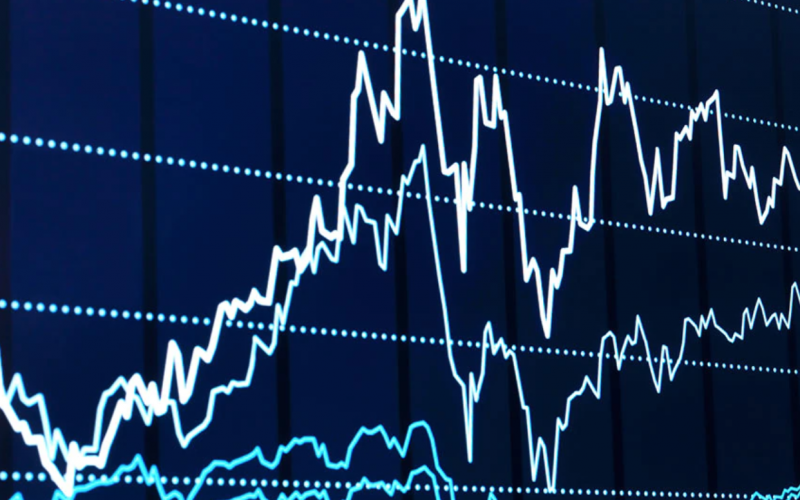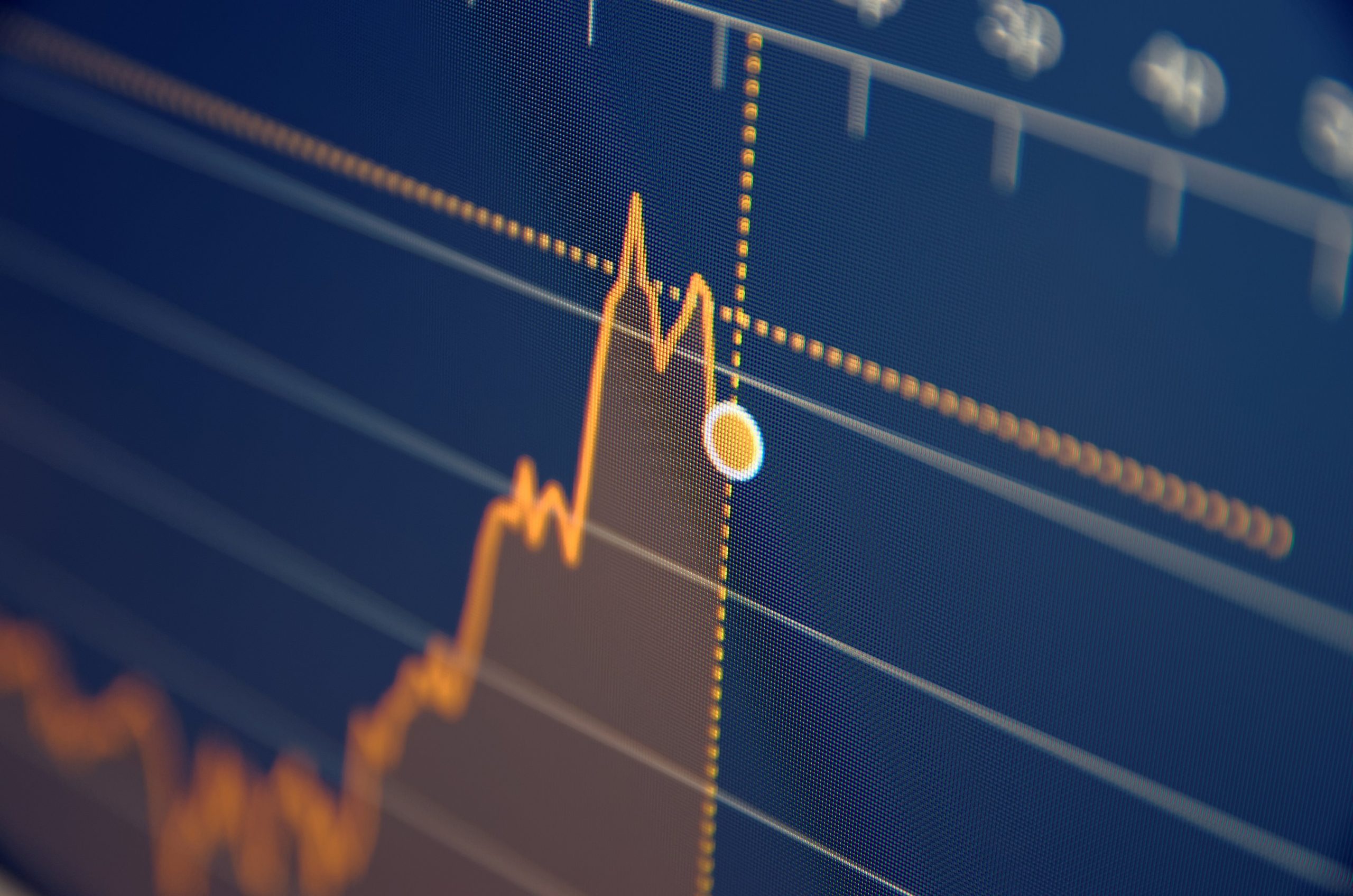by Liz Ann Sonders, Chief Investment Strategist, Charles Schwab & Company Ltd.
Key Points
- The stock market’s rally since last March has been impressive, but it’s also yielded its greatest risk: stretched sentiment.
- Several metrics suggest investor sentiment is getting euphoric, which may render stocks vulnerable, especially if we’re moving faster into the mid-to-late part of the cycle.
- Second-quarter earnings growth is expected to be stellar, but the focus should be less on the growth rate and more on what companies say with respect to profit margins and the forward outlook.
Despite some recent volatility over concerns about COVID’s delta variant and waning fiscal/monetary stimulus, stocks have continued their impressive climb off the March 2020 low. The tech-heavy NASDAQ did suffer a -10.5% correction earlier this year, and the S&P 500 has had bouts of significant volatility last September and October. However, the broad averages have gone nearly eight months without a pullback of more than 5%.
Fiscal and monetary relief in response to the crisis were massive contributors to investors’ confidence last year, helping bolster asset prices. The early-November rotation into cyclical and value-oriented areas of the market correctly signaled the broad reopening of the economy. With peak economic and/or earnings growth rates are among or behind us, equities have remained steadfast in their upward climb, with the market’s persistence having bred its largest risk: optimistic (and in some cases, extreme) sentiment.
As regular readers may know, there are myriad sentiment metrics we track, which can be separated into attitudinal and behavioral buckets. Put simply, the former identifies what investors are saying/thinking and the latter looks at what investors are doing. The charts in this report underscore the fact that sentiment overall has continued to skew optimistic—with some areas showing more frothiness than others. Starting with the metrics that aren’t yet flashing red, let’s explore what risks may be brewing, what they mean for the market, and how it ties into the upcoming earnings season.
Economic sentiment
Before getting to investor sentiment indicators, it’s important to connect them to economic sentiment indicators. One of the most widely watched consumer confidence metrics is the monthly release of The Conference Board’s Consumer Confidence Index. As seen below, confidence plunged sharply last year as the pandemic induced a global shutdown. Yet, given extraordinary government aid, the plunge wasn’t as severe as typically seen during recessions. After hitting a cycle low and hovering in a range for several months, confidence has since surged back to pre-pandemic levels.
Consumer Confidence Back to Pre-Pandemic Territory


Source: Charles Schwab, Bloomberg, The Conference Board, ©Copyright 2021 Ned Davis Research, Inc. Further distribution prohibited without prior permission. All Rights Reserved. See NDR Disclaimer at www.ndr.com/copyright.html. For data vendor disclaimers refer to www.ndr.com/vendorinfo/, as of 6/30/2021. Indexes are unmanaged, do not incur management fees, costs and expenses and cannot be invested in directly. Past performance is no guarantee of future results.
A simple look at history shows how rare this surge in confidence has been. In past recoveries/expansions (with the exception of the double-dip recession in the early-1980s), it has taken quite a while for confidence to climb back to its prior highs. This clearly isn’t anything resembling a normal cycle, and the quick rebound makes sense when considering the psychological effect of government aid being delivered straight to consumers’ pockets.
But there is a rub to the surge in consumer confidence. As shown in the table above, over the history of the index, when it’s been in its highest zone, stocks have had relatively anemic performance. By the time consumers became highly optimistic about the economy, the leading indicator that is the stock market had typically already priced in much of the improvement.
One of the more mystifying aspects of the Consumer Confidence report was the surge in the “Present Situation” component and simultaneous fall in the “Expectations” component. This spread highlights that consumers have become less confident about the future, even though they’re comfortable with current economic conditions. As you can see in the chart below, the current spread between both series is consistent with levels typically seen during the middle of economic expansions.
Stall in Expectations

Source: Charles Schwab, Bloomberg, The Conference Board, as of 6/30/2021.
The spread is not back to the extreme lows seen in advance of recessions historically, but if it continues to decline, it might suggest that we are further along in the economic cycle than most think. It would also highlight that consumers’ growing wariness of the future may lead to a potential slowdown in consumption.
Similarly, when looking at CEO Confidence, there is an analogous pattern. As shown below, CEOs’ confidence is at a record high since the inception of the index in the mid-1970s. On the surface, this would seem to be a bullish backdrop for stocks given that CEOs’ optimism is typically tied to strong corporate profits. However, as you can see in the accompanying table, high CEO confidence has historically been met with stock market returns barely in positive territory. It can be thought of as a “too much of a good thing” problem.
CEO Confidence at Record High


Source: Charles Schwab, The Conference Board, ©Copyright 2021 Ned Davis Research, Inc. Further distribution prohibited without prior permission. All Rights Reserved. See NDR Disclaimer at www.ndr.com/copyright.html. For data vendor disclaimers refer to www.ndr.com/vendorinfo/, as of 6/30/2021. Indexes are unmanaged, do not incur management fees, costs and expenses and cannot be invested in directly. Past performance is no guarantee of future results.
Investor sentiment
There are myriad attitudinal and behavioral investor sentiment indicators. One important behavioral metric is the exposure to equities of U.S. households over time. As you can see in the blue line in the chart below, stock allocations have reached 60%, which is just shy of the all-time high leading into the 2000 tech bust. The yellow line tracks the subsequent 10-year return for the S&P 500, which has a strong negative correlation to stock allocations. As shown in the accompanying table, when stock allocations were in their highest quintile historically, the average 10-year (annual) return, and low-to-high range, was the lowest among the allocation quintiles.
Households’ Lofty Exposure to Stocks


Source: Charles Schwab, Bloomberg, ©Copyright 2021 Ned Davis Research, Inc. Further distribution prohibited without prior permission. All Rights Reserved. See NDR Disclaimer at www.ndr.com/copyright.html. For data vendor disclaimers refer to www.ndr.com/vendorinfo/., as of 3/31/2021. Equity allocation (includes mutual funds and pension funds) is % of total equites, bonds and cash. Indexes are unmanaged, do not incur management fees, costs and expenses and cannot be invested in directly Past performance is no guarantee of future results.
Back by popular demand, below is a look at SentimenTrader’s Smart/Dumb Money Confidence indicators. The chart below shows how SentimenTrader breaks investors into two broad cohorts: the “smart money” (large commercial hedgers and institutional traders) and the “dumb money” (smaller odd-lot traders/speculators). As you can see, “dumb money” positioning has grown increasingly confident since mid-May, although it’s not yet back to levels of earlier this year, or before the bear market plunge last year.
While a move into extreme optimism territory (above 70%) would raise some alarm bells, it’s worth noting that “smart money” confidence has also been rising—and for a longer stretch of time. As the label suggests, that cohort has tended to be more right at extremes in the past. That said, the “dumb money” has largely been correct in its positioning for much of the stock market’s rally since last year, suggesting that the label may be a mislabel (at least so far in this cycle).
Smart and Dumb Money Not Yet at Extremes

Source: Charles Schwab, SentimenTrader, as of 7/9/2021. SentimenTrader's Smart Money Confidence and Dumb Money Confidence Indexes are used to see what the “good” market timers are doing with their money compared to what the “bad” market timers are doing and are presented on a scale of 0% to 100%. When the Smart Money Confidence Index is at 100%, it means that those most correct on market direction are 100% confident of a rising market. When it is at 0%, it means good market timers are 0% confident in a rally. The Dumb Money Confidence Index works in the opposite manner.
One metric on watch for potentially making its way into the extreme froth zone is the Panic/Euphoria model—again, from our friends at SentimenTrader. The model tracks several surveys- and market-based metrics (including commodity prices, the Investor’s Intelligence survey, and margin debt). As you can see below, the index is still in the extreme optimism zone, but its current level is largely consistent with what we’ve seen during prior expansions.
Extreme Optimism But Not Peak Euphoria

Source: Charles Schwab, SentimenTrader, as of 7/9/2021.
Euphoria reached an all-time high back in mid-February of this year—which, not coincidentally, was the height of the meme stock craze and the peak for several speculative trades (such as non-profitable tech companies and SPACs). Perhaps because the most rampant speculative froth was within non-traditional pockets of the market, the extreme corrections among those speculative trades were not accompanied by similar declines in the major averages (although it did coincide with the aforementioned correction in the NASDAQ).
Still-frothy behavior in options market
There are some market pockets suggesting more elevated risks, most of which have been brewing since—and are a function of—the market’s ascent off the March 2020 lows. Perhaps the most notable move on the behavioral side has been the surge in options activity. Investors began to pile into call options at an accelerated pace as the economy initially shut down, took a bit of a break in the latter half of the year, and then resumed their purchases into this year—sending volumes soaring, as you can see in the chart below. While it’s too soon to say call option volume peaked earlier this year, the broader, long-term uptrend remains intact; so, this surely bears watching moving forward.
Calling All Options

Source: Charles Schwab, Bloomberg, as of 7/9/2021.
It’s not just the options market that has seen a spike in activity. Investors continue to pour money into equity exchange traded funds (ETFs) at an unprecedented pace. More than $300 billion has flowed into U.S. equity ETFs over the past 12 months, as you can see in the chart below.
Surging ETF Flows

Source: Charles Schwab, Investment Company Institute (ICI), as of 5/31/2021.
The recent parabolic move up warrants some caution, as prior surges have tended to precede weakness for stocks—notably, before the Global Financial Crisis and the sharp correction in early 2018 (albeit an early “warning” that time).
Let’s wrap up by looking at a comprehensive proxy for both attitudinal and behavioral sentiment—the Crowd Sentiment Poll (CSP) from Ned Davis Research (NDR)—which is an amalgamation of seven investor sentiment indicators. As shown below, the poll has been in the extreme optimism zone for the better part of the past eight months. As shown in the accompanying table, this has historically been the worst zone for market performance.
Watch the Crowd


Source: Charles Schwab, ©Copyright 2021 Ned Davis Research, Inc. Further distribution prohibited without prior permission. All Rights Reserved. See NDR Disclaimer at www.ndr.com/copyright.html. For data vendor disclaimers refer to www.ndr.com/vendorinfo/, as of 7/6/2021. Indexes are unmanaged, do not incur management fees, costs and expenses and cannot be invested in directly. Past performance is no guarantee of future results.
The past eight months have indeed been a testament to the fact that sentiment can stay stretched for long periods of time without any significant downturn in equities. Elevated optimism in and of itself isn’t a reason for stocks to reverse course; a negative catalyst is often the ingredient needed to tip the scales.
Heading into earnings season, hopes are high for another stellar quarter. However, a weaker-than-expected quarter for earnings relative to expectations—or a more somber outlook from companies—could represent that negative catalyst. That is not our base case; but given that second quarter S&P 500 earnings growth is expected to represent the peak in the growth rate of earnings, it’s something to keep in mind as the season gets underway.
Earnings tea leaves
The latest estimate from Refinitiv is for S&P 500 earnings to jump by 65.8% (year-over-year) in the second quarter, an increase from 52.8% in the first quarter. Companies have indeed seen a strong rebound as the economy has reopened, but much of the strength is coming from base effects (a.k.a. easy comparisons), given the economy was largely shut down this time last year.
This is evident in the leadership mix. Industrials, Consumer Discretionary, and Energy are expected to lead with growth estimates of 571%, 273%, and 223%, respectively (Utilities is the only sector that is expected to have a contraction in earnings).

Source: Charles Schwab, I/B/E/S data from Refinitiv, as of 7/9/2021. Indexes are unmanaged, do not incur management fees, costs and expenses and cannot be invested in directly. Forecasts contained herein are for illustrative purposes only, may be based upon proprietary research and are developed through analysis of historical public data.
Clearly, the magnitude of the strength in earnings has been reflected in the stock market’s strong performance. As such, the focus this season may be less on the growth rate for the quarter, and more on the outlook for the remainder of the year, as well as the profit margin story given heightened cost pressures.
Price pressures heated up significantly in the second quarter due to supply chain disruptions amid rising demand. So far, companies have weathered that storm well. However, the key for earnings moving forward is whether higher input/wage costs are sticky, and whether companies are passing those higher costs on, or letting them eat into profit margins. As you can see in the next chart, estimated profit margins swiftly recovered from their pandemic losses and are hovering near new highs.
Profit Margins’ Stellar Recovery

Source: Charles Schwab, Bloomberg, as of 7/9/2021. Forward estimates are for the next 12 months and are calculated by Bloomberg. Past performance is not guarantee of future results.
Forward estimates for profit margins have stalled over the past couple months, and if they eventually roll over, it might signal some weakness ahead for the market. Aside from the obvious downturns before/during the Global Financial Crisis and the pandemic last year, you can see that profit margin weakness preceded trouble for stocks in 2011-2012, 2015, and 2018.
In sum
Investor sentiment has remained quite elevated over the course of the market’s 16-month advance. While we aren’t seeing the broad-based euphoria that preceded the coronavirus crash in early 2020, several metrics underscore that investors are very optimistic in both their attitudes and positioning. That has been the case for a considerable portion of the current bull run, and throughout that time, we would argue that strong breadth has shielded the market and prevented any choppiness from transforming into something more sinister. Some short-term breadth metrics have started to weaken but, thus far, longer-term breadth is still healthy, with more than 90% of stocks in the S&P 500 above their 200-day moving average.
Aside from wholly unpredictable virus-related factors, some negative catalysts could emerge in the form of hits to profit margins, a dialing back in future earnings estimates, and/or a faster-than-expected maturation of the business cycle. As we’ve continued to argue, the best preparation will continue to be discipline around diversification—not just related to sectors, but factors as well—and periodic rebalancing.














